| Columns Retired Columns & Blogs |
I'd take a 911 S all day over the Maybach!
I performed a full suite of measurements on one of the PS Audio Stellar M1200s (serial no. 12-A1-0G0033), using my Audio Precision SYS2722 system (see the January 2008 "As We See It"). Because the Stellar M1200 features a class-D output stage, all the measurements other than the frequency response tests and one of the squarewave tests were taken with Audio Precision's AUX-0025 auxiliary passive low-pass filter, which eliminates much of the ultrasonic noise that might otherwise drive the analyzer's input into slew-rate limiting. Without the filter, 373mV of ultrasonic noise was present at the amplifier output terminals.
The Stellar M1200's voltage gain at 1kHz into 8 ohms was a little higher than usual, at 30.5dB with both balanced and unbalanced input signals. (This was also the case with PS Audio's Stellar M700, which Robert Deutsch reviewed in February 2018, and the BHK Signature 300 that Michael Fremer reviewed in February 2016.) Both inputs preserved absolute polarity (ie, were noninverting), and the single-ended input impedance was 47k ohms at low and middle frequencies, decreasing slightly and inconsequentially to 37.6k ohms at the top of the audioband. The balanced input impedance was exactly twice these values, as expected. The output impedance (including the series resistance of 6' of speaker cable) was very low, at 0.05 ohm at 20Hz and 1kHz, and 0.08 ohm at 20kHz.
The gray trace in fig.1 shows the Stellar M1200's small-signal frequency response into our standard simulated loudspeaker. The variations in response were a negligible ±0.05dB. Into resistive loads (blue, magenta, and red traces), the amplifier rolled off above the audioband, with –3dB frequencies between 40kHz and 50kHz depend ing on the load resistance. The Stellar M1200's reproduction of a 10kHz squarewave (fig.2) featured a slight amount of well-damped overshoot. This graph was taken with the auxiliary low-pass filter; it is absent when I repeated the test without the filter (fig.3), though the trace is now overlaid with ultrasonic noise.
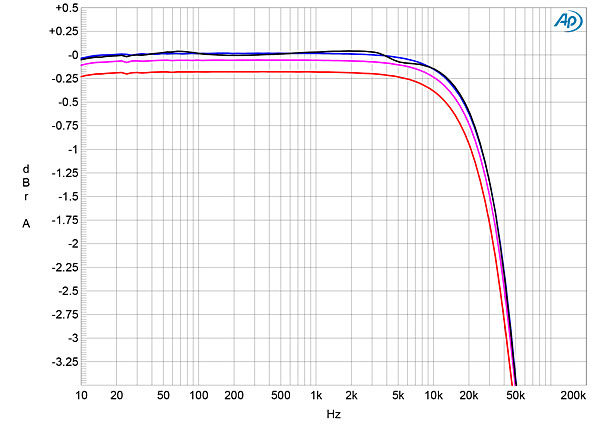
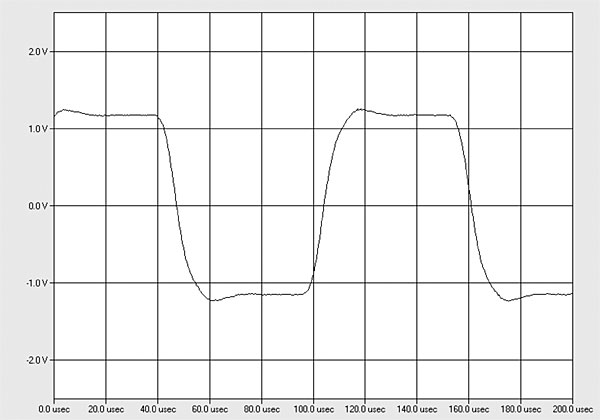
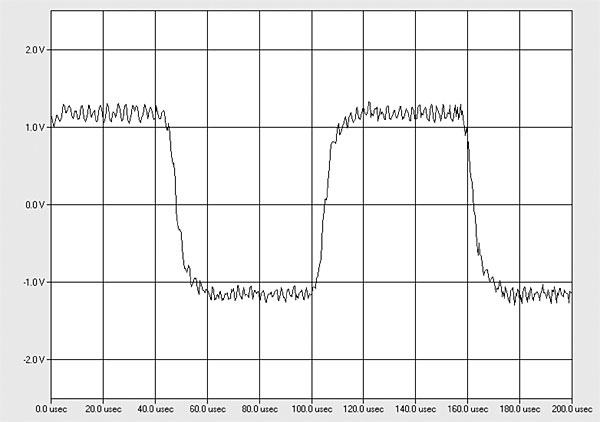
The unweighted, wideband signal/noise ratio (ref. 1W into 8 ohms and measured with the unbalanced input shorted to ground) was okay, measuring 66.3dB. This ratio improved to 78.6dB when the measurement was restricted to the audioband and 82.7dB when A-weighted. Spectral analysis of the low-frequency noise floor while the Stellar M1200 drove a 1kHz tone at 1W into 8 ohms (fig.4) revealed that no AC-related spuriae were present, and that the S/N ratios were dominated by random noise components.
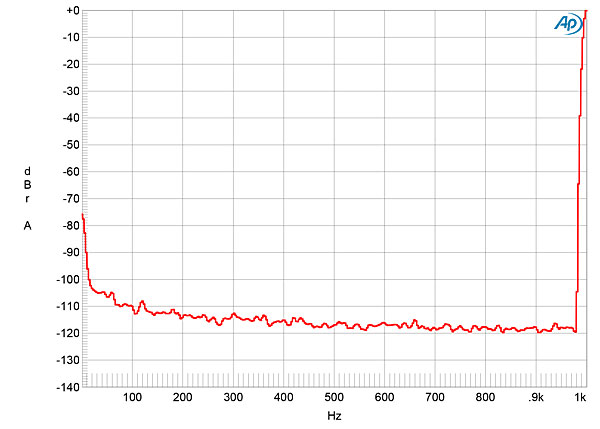
The PS Audio met its specified output powers of 600W into 8 ohms and 1200W into 4 ohms (both equivalent to 27.8dBW), clipping at 610W into 8 ohms (27.9dBW, fig.5) and 1200W into 4 ohms (fig.6). Fig.7 plots the percentage of THD+noise into 8, 4, and 2 ohms at a level, 20V (equivalent to 50W into 8 ohms, 100W into 4 ohms, and 200W into 2 ohms), at which I could be sure I was looking at actual distortion rather than noise. The THD was very low at low and middle frequencies into 8 ohms (blue trace) and 4 ohms (magenta) but rose into 2 ohms (red) and in the top two audio octaves.
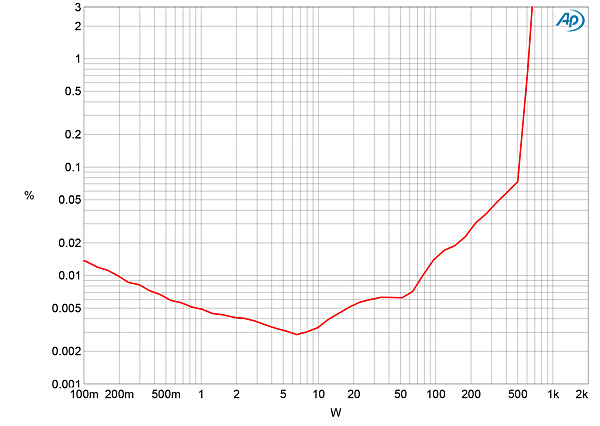
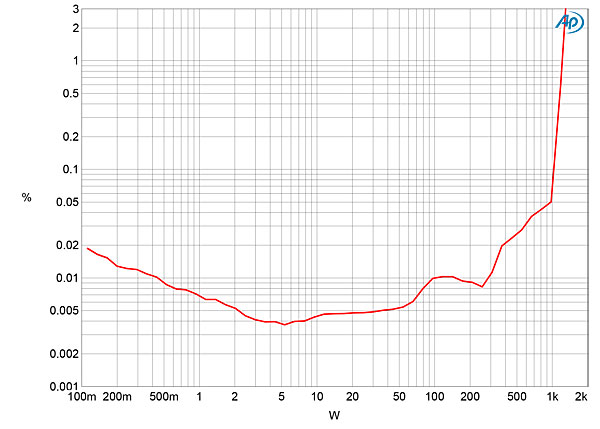
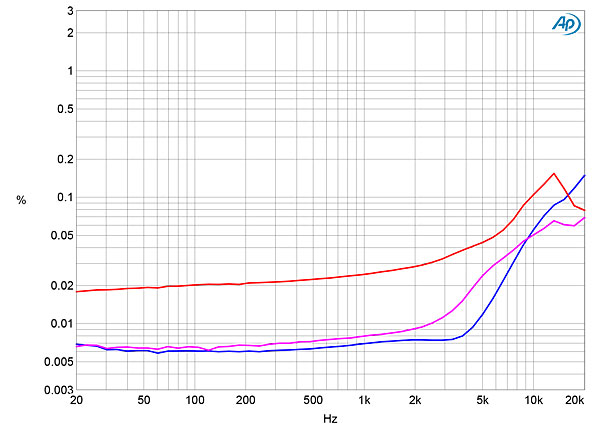
The distortion signature into 8 ohms was predominantly the relatively benign third harmonic (fig.8), which was low in level, lying at –83dB (0.007%, fig.9). To my surprise, when I repeated the spectral analysis at the same voltage into 4 ohms (fig.10), the third harmonic disappeared and was replaced by the second harmonic at –87dB (0.005%). Higher harmonics now made an appearance, though these all lie at or below –100dB (0.001%). Despite the decreasing linearity at high frequencies seen in fig.7, the M1200 performed well when driving an equal mix of 19 and 20kHz tones at 100W into 4 ohms (fig.11). The 1kHz difference product lay at –94dB from the peak signal level (0.002%), and the higher-order products at 18 and 21kHz were a little lower in level.
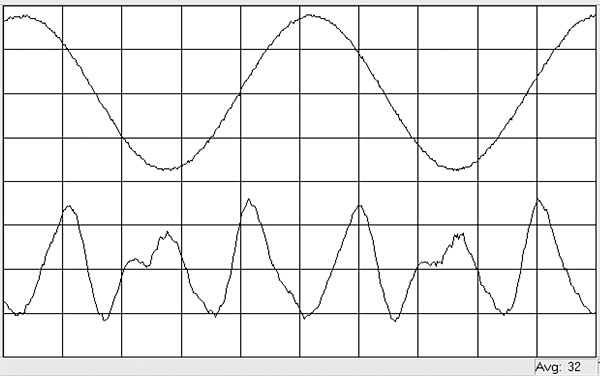
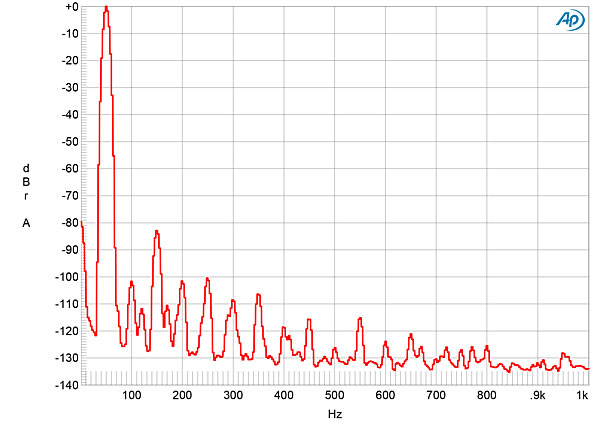
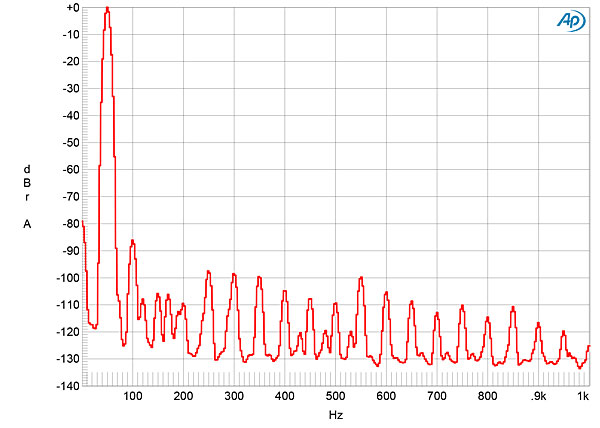
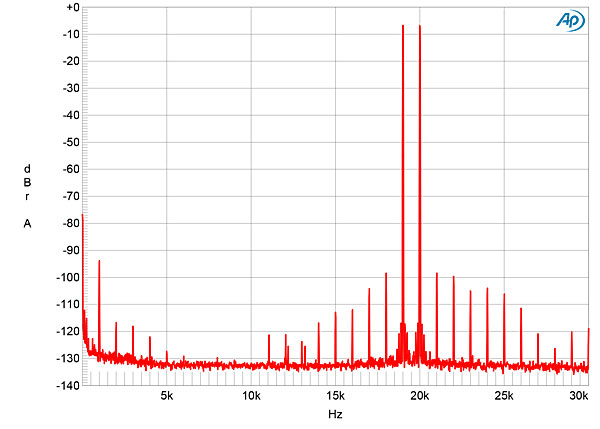
The PS Audio Stellar M1200's performance in the test lab indicates that it is a well-designed, well-engineered powerhouse.—John Atkinson

I'd take a 911 S all day over the Maybach!

Agree completely with MF assessment on the class D sound , Fast , punchy and very musical on recordings which changes direction and pace often, only to be let down by their poor timbre , especially on piano’s were everything sounds like a magical keyboard ..
Flatter to deceive they do very well ..!
Regards

Nice review. But it seems like it would be more appropriate to compare this amp to conventional high powered budget offerings from Parasound, Bryston and Musical Fidelity than to a super amp. After all this is probably the choice confronting folks in this price class.

Agreed, we should at least know how it stacks up against similarly priced things.
Other reviews seem to notice similar issues that are cleared up by adding a tube damper and making sure the tubes are fully seated in their sockets. And a few hundred hours of burn in to let the vibrating elements find their seating. Some also have noticed that not stacking them helps, too.
Go figure. Sounds like a nice effort.
The reviewer wasn't all that happy, yet they rated it as a "class A" so I don't know what they are trying to say.

... really are, especially compared to a pair of the NAD C298 amps, which use the Purifi amp modules and have a rated output in bridged-mono configuration of 1kW @ 8Ω and 1.1kW @ 4Ω - all for $4K/pair.

mmm with more mmm .. will be enough for my WB Chimera .? I don't think they are enough, after this review.